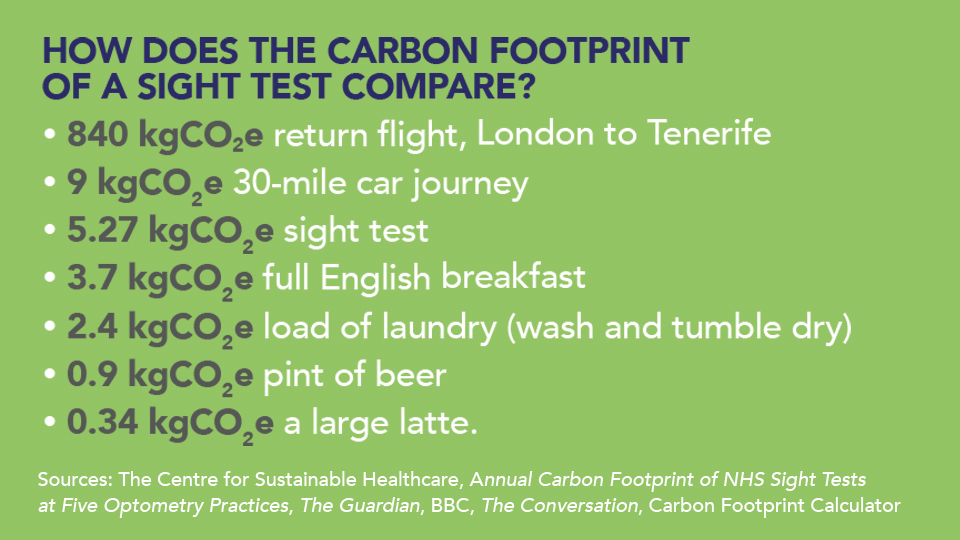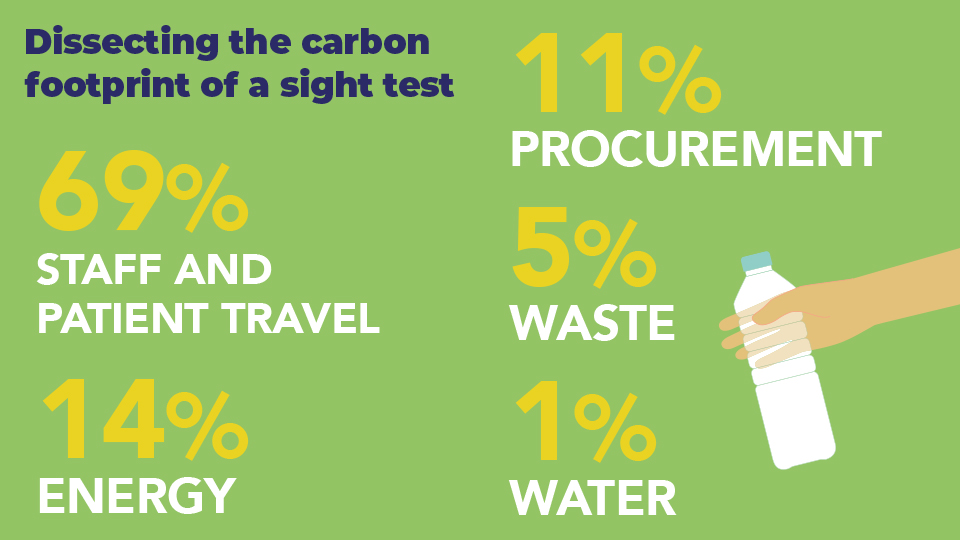- OT
- Life in practice
- Business management
- The sustainable optometry practice
Practice team guide
The sustainable optometry practice
How can the optical sector reduce its environmental impact? OT explores the role of practice teams in creating a sustainable future

07 October 2022
As temperatures rose to record-breaking levels in the UK this summer, consumers were increasingly changing their behaviour in line with a more sustainable lifestyle.
A survey in June this year by Deloitte found that 75% of UK residents recycled or composted household waste, while 64% of survey participants had limited their use of single-use plastic.
More than half of respondents (59%) shared they had limited new purchases, while 39% had reduced their intake of meat and animal products – up 9% and 20%, respectively, from the previous year.
The focus on sustainability has extended from personal choices to the world of work.
Within optometry, many optical practices are aiming to limit the impact that businesses have on the environment.
Calculating the carbon footprint of a sight test
In February, the Centre for Sustainable Healthcare published a report calculating the annual carbon footprint of NHS sight tests at five optometry practices in the North West of England.
The research was produced in partnership with NHS England and NHS Improvement (Cheshire & Merseyside) and Cheshire Local Optical Committee.
Across the five practices, 25,745 NHS sight tests were performed in 2020 – equating to a carbon footprint of 135,573 kgCO2e.
The average carbon footprint per sight test equated to 5.27 kgCO2e.
The biggest contributor to the carbon footprint of the sight test was travel (69%) followed by energy (14%), procurement (11%) and waste (5%).
It takes a healthy planet to have healthy people and communities
Taking these findings into account, the study authors recommended that NHS England consider travel and accessibility when commissioning new optometry contracts – ideally offering services that can be reached by active or public transport.
They also encourage the use of contact lens and spectacle lens recycling points, as well as collaboration between optometrist and industry to measure and reduce the carbon emissions of optical products and packaging.
Asking the right questions
For Simon Berry, the sustainability of his optical practice has evolved over time.
In 2016, he developed an Ethical Supply Questionnaire to ensure that he could trace back the products that he stocks within his Durham practice.
“If I am selling something then I am endorsing it. I think that means I should make sure it is as sustainable as possible,” Berry explained to OT.
A series of 10 questions assesses the company across a range of areas – from whether the company has environmental policies to if it can trace the product back to raw materials.

Suppliers are quizzed on whether the product packaging is recyclable and if the company can calculate a carbon footprint for the product.
Berry is also involved in a research project with Durham University that is attempting to develop an algorithm that would estimate the carbon footprint of any frame taken off the rack.
In good company
Alongside individual practices, large optical companies have taken steps to assess and limit the environmental impact of providing products and services.
Johnson & Johnson Vision has prioritised energy efficiency, with 100% of electricity coming from renewable sources. The company recycles 89% of raw materials on location at its manufacturing sites.
As part of its Acuvue contact lens recycling programme, more than 8.8 million contact lenses, blister packs and foils in the UK have been recycled.

JJV has reduced the paper and single-use plastics used in product packaging and guaranteed that all paper packaging comes from responsibly managed forests.
The company has reduced its annual carbon footprint by 48,000 tonnes.
Professional education and development manager for Johnson & Johnson Vision, Dr Rachel Hiscox, highlighted that the company’s sustainability efforts are focused in three areas: climate change, waste reduction, and protecting natural resources.
“It takes a healthy planet to have healthy people and communities. That’s why we’re constantly innovating to find sustainable solutions to climate change, recognising its crucial role in helping to protect the planet,” Hiscox shared.
She noted that sustainability matters “more than ever” for for the consumers and patients that optical practices serve.
“We’re committed to finding sustainable solutions to existing challenges, as well as tackling key issues that affect us all. We’ll continue to demand more from ourselves too, as we work towards our sustainable vision and creating a healthier planet,” she said.
The Deloitte research found that around one in four consumers will consider whether a product is made from natural materials or a renewable resource when making a purchase.
Close to one in three (31%) would take into account whether a product uses minimal or recyclable packaging, while more than half of consumers would factor in whether the product was durable and long-lasting.
Find out more about how Johnson & Johnson Vision is helping the environment.


Comments (0)
You must be logged in to join the discussion. Log in